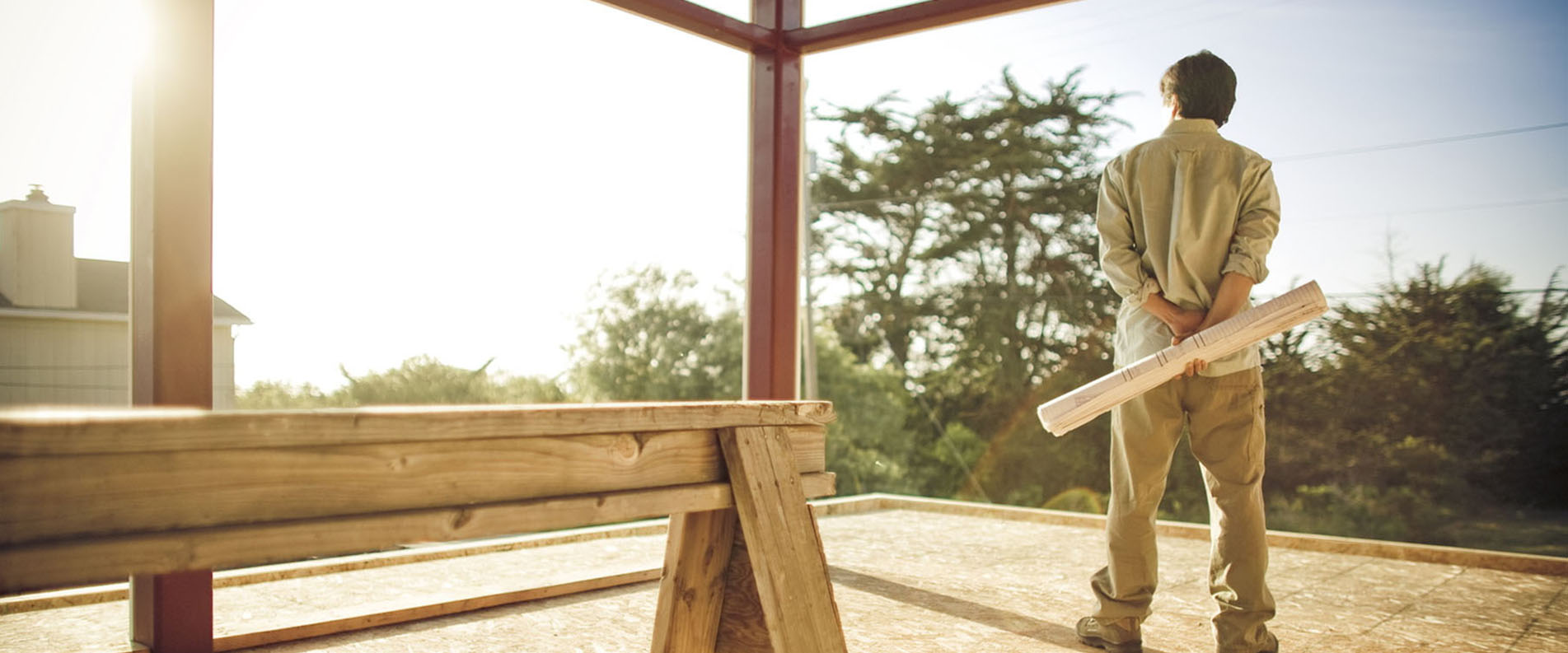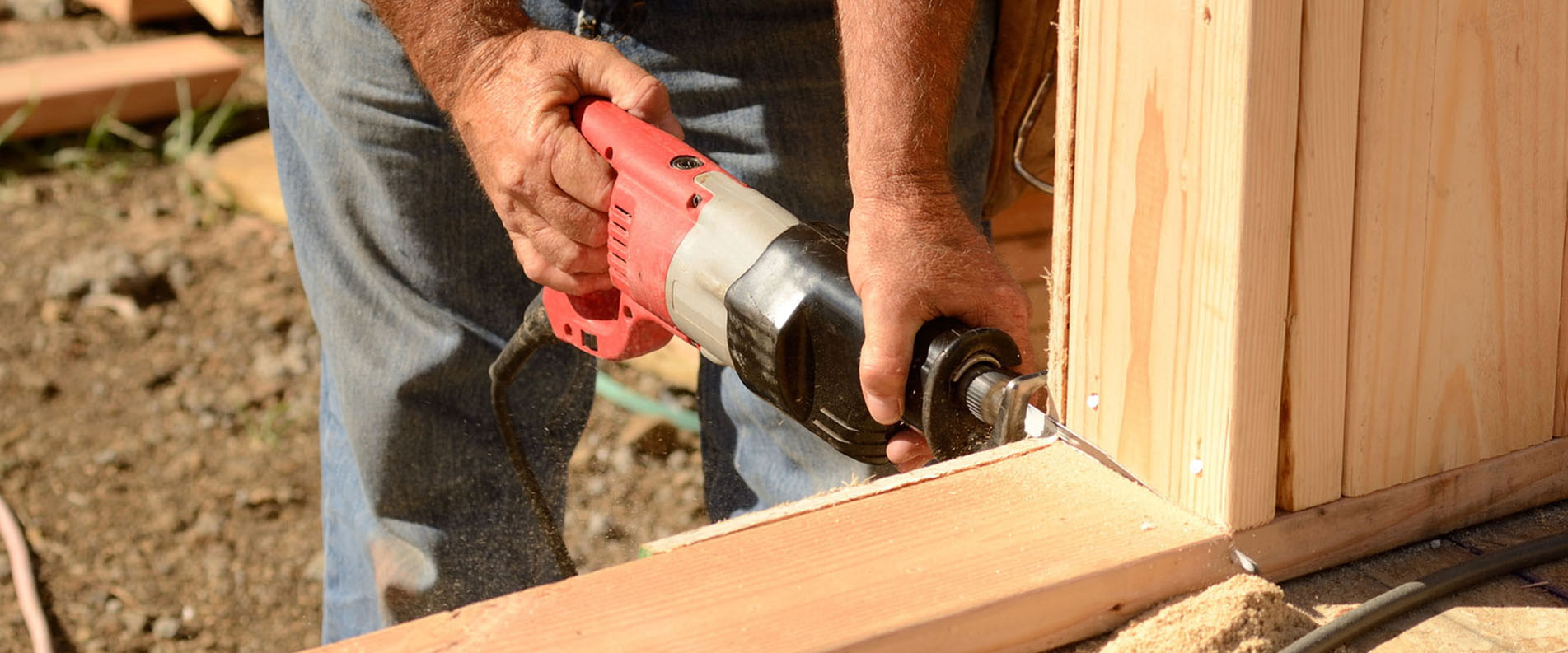Bathroom & Basement Waterproofing
Traditional Waterproofing Method
To waterproof shower walls, there are two waterproofing methods - Traditional and Topical. With the Traditional Method, 4 - 6 mil sheets of plastic is installed between the studs and cement backerboard (the substrate). By stapling the plastic to the studs, a moisture barrier is formed that will keep the frame from getting wet. Cement backerboard is a commonly used substrate made of a light-weight formed concrete or layers of a concrete-based fiber that will remain dimensionally stable and not swell or disintegrate from exposure to water overtime.
Even though the cement backerboard will still absorb water and eventually become saturated, the water is contained by the substrate (cement backerboard) and kept from the frame by the plastic. The water is eventually directed toward the drain. Unlike the Topical Method that has a variety of different products that can be used, products needed for the Traditional Method are very straightforward - plastic that is 4 - 6 mils thick and cement backerboard. When using the Traditional method, cement backerboard must be used as the substrate. Roofing felt, however, may be substituted for the plastic.
Topical Waterproofing Method
With a Topical waterproofing method, the moisture barrier or waterproofing membrane is installed directly on top of the cement backboard (or other substrate). The tile is then installed directly on top of the waterproofing membrane so that the water will never reach even the substrate (or the frame). While both methods are very effective when properly installed, the Topical method is often considered the better choice when choosing a waterproofing method because water is directed toward the drain immediately once it gets behind the tile.
There many different types of waterproofing products that can be used when using the Topical Method including fabric membranes, liquid membranes, and faced membranes. All three types of waterproofing membranes will offer comparable performance but are installed differently with varying level of time and skill required.
Liquid Waterproofing Membranes
Liquid Membranes come in a pail or bucket and are a thick liquid with a consistency similar to paint. They can be applied to the substrate with a brush, roller, or even a sprayer for large scale, commercial jobs. As they cure, they form a rubberized waterproof surface, and in addition to waterproofing, many of these membranes will also offer crack suppression and anti-fracture properties. Most liquid waterproofing membranes are not suitable as vapor barriers, however, and a vapor barrier membrane will need to be used in conjunction for applications such as steam rooms.
Waterproofing a shower with liquid membranes is fairly easy and straightforward as long as the product instructions are followed. They all require at least two coats of the correct thickness and each coat must completely cure before adding the next coat. Most liquid waterproofing products, however, will still require the use of waterproofing fabric in the seams and corners for a truly watertight shower. The one exception is for Laticrete Hydro Ban which does NOT require waterproofing fabric in the seams and corners. Once cured, tile can be installed directly on top of the membrane.
- Laticrete Hydro Barrier
- Laticrete Hydro Ban
- Custom Building Products Redgard
Waterproofing Sheet Membranes
When building a shower, waterproof sheet membranes are another very popular option for topical waterproofing. Sheet membranes are thin, lightweight rolls of material that are adhered to the substrate with thinset. They are often made out of sheets of polyethylene or similar type of flexible plastic and are installed on top of the substrate similar to how wallpaper is applied to a wall. In addition to waterproofing, these membrane may also have additional properties such anti-fracture, crack suppression, and vapor management. Tile can be installed directly on top of the membrane once the membrane has been installed.
For waterproof sheet membranes to work properly, they must be cut down to size and the appropriate size trowel must be used when spreading the mortar on the substrate, ensuring proper coverage is achieved. All seams, corners, and changes in planes will require an additional strip of membrane as well to get a watertight seal. Because waterproof sheet membranes are more involved, there is a steeper learning curve and can be more difficult to work with the first few times. To be absolutely waterproof, the waterproof sheet membrane must be installed correctly.
- Laticrete Hydroban Sheet Membrane
- Schluter Kerdi
- Noble NobleSeal TS Waterproofing Membrane
Call Jaime's Construction Today
To learn more about the benefits of waterproofing as an all-purpose construction material, get in touch with us today. With endless opportunities to create beautiful custom designs, as well as to build a new bathroom or your basement remodeling, waterproof is an excellent choice for any home or business owner looking to add something to their property. Give us a call to schedule your free consultation today.



